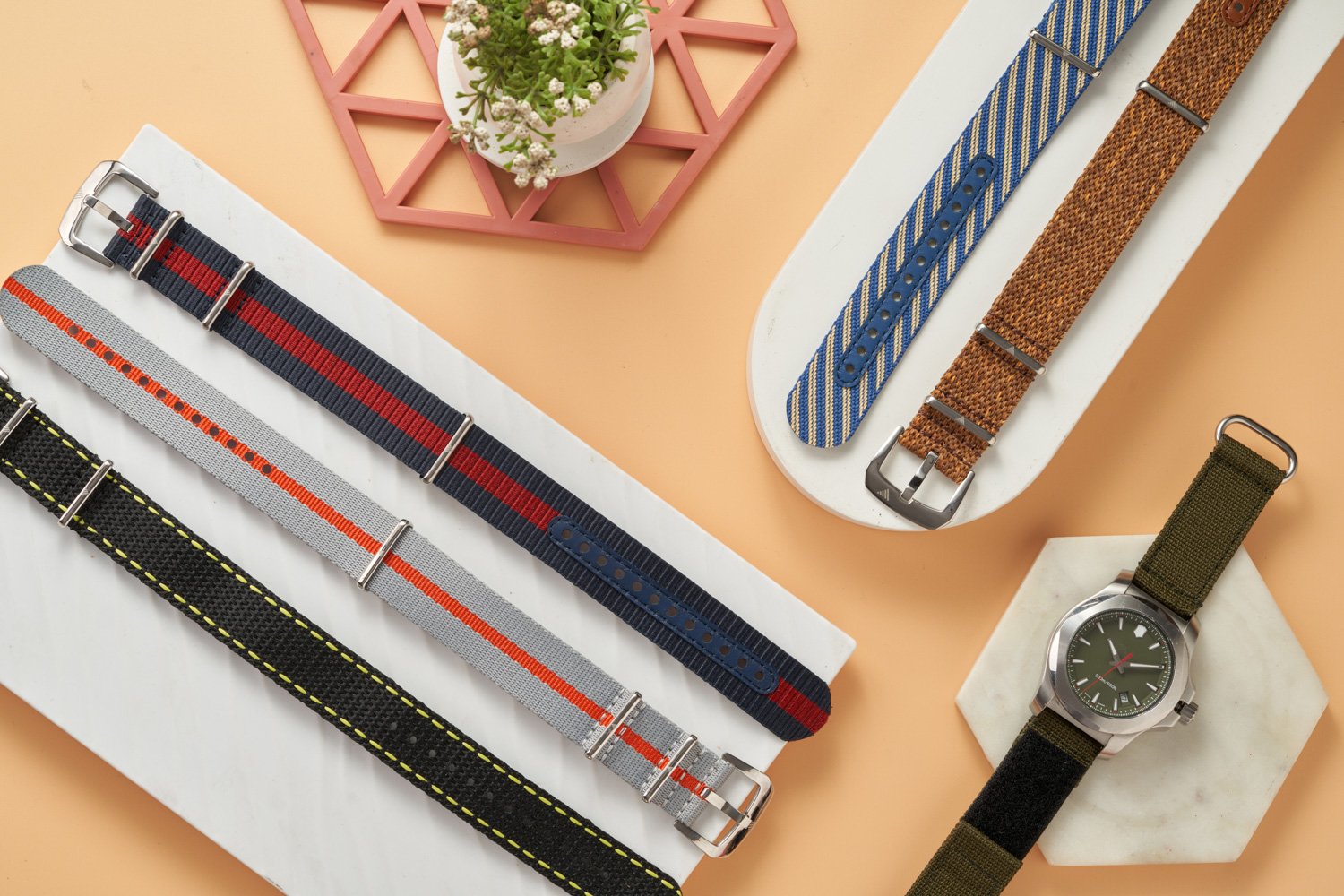A Guide to Cleaning and Maintaining Different Watch Straps
Watches are not just functional accessories; they are also style statements. However, to keep your timepiece looking its best, it's essential to regularly clean and maintain it. One crucial aspect of watch care is cleaning the watch strap. In this blog post, we'll explore various types of watch straps and provide you with a comprehensive guide on how to clean and maintain them.
Leather Watch Straps:
Leather watch straps exude elegance and sophistication, but they require special care to maintain their appearance and durability.
Cleaning Process:
Use a dry, soft cloth to wipe away any surface dust or dirt.
Dampen a cloth with a mild soapy solution (water and a small amount of gentle soap) and gently wipe the strap.
Avoid soaking the leather; instead, use a damp cloth to prevent water damage.
Dry the strap thoroughly with a clean, dry cloth.
Maintenance Tips:
Keep leather away from direct sunlight and extreme temperatures.
Use leather conditioner occasionally to prevent drying and cracking.
Rotate between multiple watch straps to reduce wear on a single strap.
Metal Watch Straps
Metal watch straps, often made of stainless steel or other alloys, are durable and resilient. Regular cleaning can keep them looking brand new.
Cleaning Process:
Mix a mild soapy solution (mild dish soap and water) and dip a soft brush or toothbrush into it.
Gently scrub the metal strap, paying attention to the links and clasp.
Rinse the strap with clean water to remove any soap residue.
Dry thoroughly with a soft, clean cloth.
Maintenance Tips:
Avoid exposing metal straps to harsh chemicals, including perfumes and cleaning agents.
Polish the strap with a microfiber cloth to maintain its shine.
Check for any loose or damaged links regularly.
Nylon and Fabric Watch Straps
Nylon and fabric watch straps are popular for their comfort and versatility. Proper care ensures they remain vibrant and free from odors.
Cleaning Process:
Remove the strap from the watch case.
Soak the strap in a bowl of warm, soapy water for a few minutes.
Gently scrub with a soft brush to remove dirt.
Rinse thoroughly and let it air-dry completely.
Maintenance Tips:
Avoid submerging the watch case in water; instead, clean the strap separately.
Rotate between multiple fabric straps to minimize wear on a single strap.
Spot clean any stains promptly.
Rubber and Silicone Watch Straps
Rubber and silicone straps are durable and ideal for sports and outdoor activities. Regular cleaning prevents the buildup of sweat and grime
Cleaning Process:
Remove the strap from the watch case.
Wipe the strap with a damp cloth to remove surface dirt.
For stubborn stains, use a mixture of mild soap and water.
Rinse thoroughly and let it air dry.
Maintenance Tips:
Avoid prolonged exposure to sunlight, as it may cause discoloration.
Check for any signs of wear or damage, especially around the buckle area.
Use a silicone protector or conditioner to maintain flexibility.
Exotic Skin Watch Straps
Exotic skin leather watch straps epitomize the epitome of sophistication, seamlessly blending nature's artistry with the craftsmanship of horology. Crafted from the hides of alligators, lizards, Shark Skin, or snakes, these straps exhibit a unique fusion of textures and patterns that redefine timepiece aesthetics. The supple scales of alligator, the fine grains of lizard, or the sinuous charm of snake skins not only adorn the wrist but also tell a story of rare elegance and refinement.
Cleaning exotic skin watch straps requires care to maintain their unique texture and appearance. Here are some general guidelines:
Materials Check:
Identify the exotic skin type (e.g., alligator, lizard, snake, shark) to choose the appropriate cleaning method.
Gentle Wiping:
Use a soft, lint-free cloth to gently wipe away any surface dirt or dust. Avoid using abrasive materials that could scratch the exotic skin.
Damp Cloth:
If necessary, dampen the cloth slightly with distilled water. Wring out excess moisture to prevent over-wetting the strap.
Avoid Soaking:
Exotic skins are sensitive to moisture, so never soak the watch strap. Excessive water exposure may damage the skin and alter its appearance.
No Harsh Chemicals:
Avoid using harsh chemicals, solvents, or cleaning agents, as they can damage the natural oils in exotic skin and cause discoloration.
Conditioning (if needed):
Depending on the type of exotic skin, you may use a specialized exotic leather conditioner sparingly. Apply a small amount to a soft cloth and gently massage it into the skin.
Drying:
Allow the strap to air dry naturally. Avoid using heat sources like hairdryers, as they can cause the skin to crack.
Storage:
Store your watch in a cool, dry place away from direct sunlight and extreme temperatures. Avoid contact with other watches or items that could potentially scratch the exotic skin.
Regular Maintenance:
Periodically inspect the watch strap for any signs of wear or damage. Address any issues promptly to prevent further damage.
Remember that these are general guidelines, and it's essential to refer to any specific care instructions provided by the watch manufacturer or leather care products you may use. If you have doubts or concerns, consider consulting with a professional watchmaker or a specialist in exotic leather care.
Whether your watch strap is leather, metal, nylon, fabric, rubber, or silicone, regular cleaning and proper maintenance are essential to preserve its appearance and functionality. By following these guidelines, you can ensure that your timepiece remains a reliable and stylish companion for years to come. Remember, a well-maintained watch not only keeps time but also makes a lasting impression.











